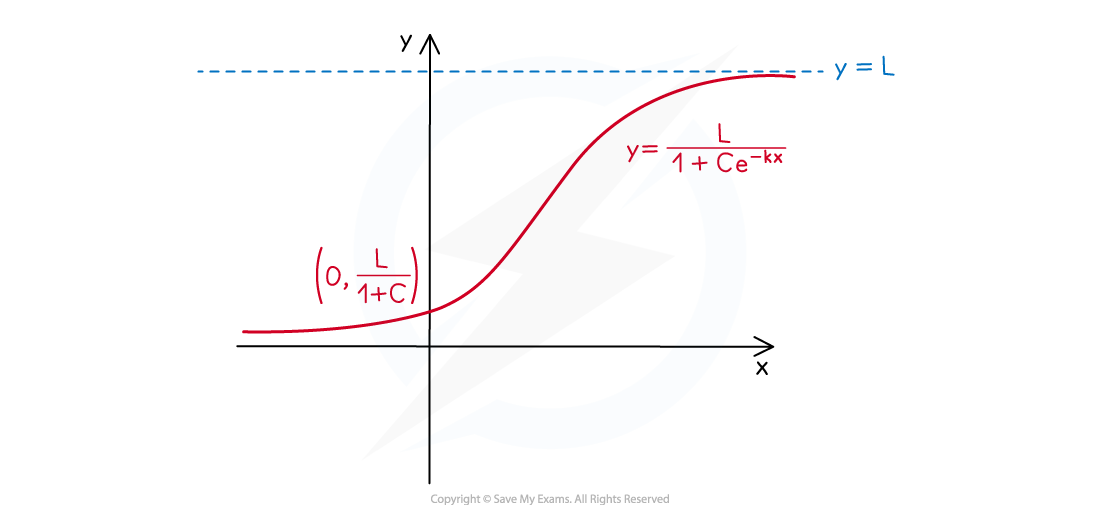Logistic Models (DP IB Applications & Interpretation (AI)): Revision Note
Logistic functions & graphs
What are the key features of logistic graphs?
A logistic function is of the form
,
&
are positive constants
Its domain is the set of all real values
Its range is the set of real positive values less than
The y-intercept is at the point
There are no roots
There is a horizontal asymptote at
This is the upper limit of the function
This is called the carrying capacity
e.g. it could represent the limit of a population size
There is a horizontal asymptote at
The graph is always increasing

Logistic models
What are the parameters of logistic models?
A logistic model is of the form
The value of
represents the limiting capacity
This is the value that the model tends to as
gets large
The value of
(along with the
) helps to determine the initial value of the model
The initial value is given by
Once
has been determined you can then determine
The value of
determines the rate of increase of the model
What can be modelled using a logistic model?
A logistic model can be used when the variable initially increases exponentially and then tends towards a limit
H(t) is the height of a giraffe t weeks after birth
P(t) is the number of bacteria on an apple t seconds after removing from protective packaging
P(t) is the population of rabbits in a woodlands area t weeks after releasing an initial amount into the area
What are possible limitations of a logistic model?
A logistic graph is bounded by the limit
However in real-life the variable might be unbounded
e.g. the cumulative total number of births in a town over time
A logistic graph is always increasing
However, in real-life there could be periods where the variable decreased or fluctuates
Worked Example
The number of fish in a lake, , can be modelled by the function
where is the number of months after fish were introduced to the lake.
a) Initially, 50 fish were introduced to the lake. Find the value of .
Answer:

b) Write down the limiting capacity for the number of fish in the lake.
Answer:

c) Calculate the number of months it takes until there are 500 fish in the lake.
Answer:


Unlock more, it's free!
Did this page help you?